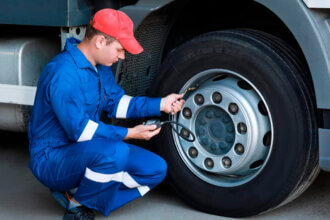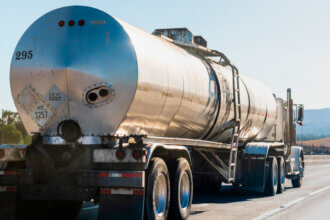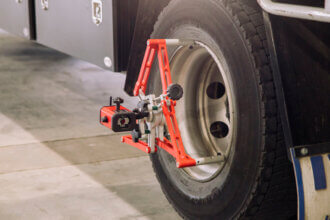Ways to extend tire life in cold weather
Not only snow and ice, but cold temperatures in general can greatly affect the condition of a truck’s tires. What’s the experts advice?
Continental, Goodyear and Michelin employees suggest to pay more attention to inflating tires in cold weather and take care of fence-mending before driving, as colder temperatures cause dropping pressure in tires, that can affect traction when it’s needed most – when there’s snow and ice.
Checking tire pressure in cold weather requires the right approach for best results!
One common mistake that’s often seen – is checking tire pressure on a warmed-up truck and then when the truck goes to the cold it becomes insufficiently inflated.
When the tire cools down, the air or gas pressure inside the tire drops, even if there’s no air leakage in the tire. Heat expands and cold compresses air and other gases. Tires under improper pressure won’t function properly.
The ideal time to check your tire pressure is during the pre-trip inspection. Driving even for a short distance heats up the tires and the pressure rises.
Always try to use a properly calibrated pressure manometer when checking tire pressure and you shouldn’t rely on how tires look. If the tire pressure is 20% lower than recommended, it should be considered as flat. It must be removed and checked for blowouts or other damage.
At the same time, avoid over-inflating the tires, as this can negatively affect traction and treadwear.
Most states have instructions for using snow chains!
Chain damage can occur if the chains are improperly installed, especially if they sit too loosely on the tire. It’s also important to ensure that each chain is in good operating state, with no loose or broken links.
Monitor the weather and check if the truck is heading for an area known for harsh winter conditions, where snow chains may “be required by local law enforcement.”
Use chains only when it’s necessary. The chance of tire damage from chains will increase with increasing travel speed and path length, and when they are used on dry asphalt.
In general, chains should only be used for as long as it’s really needed and the vehicle speed should be relatively low.
Studded tires are known to provide improved traction on ice, however, they shouldn’t be used on roads that aren’t covered in ice as they can increase braking distances, noise and wearing.




